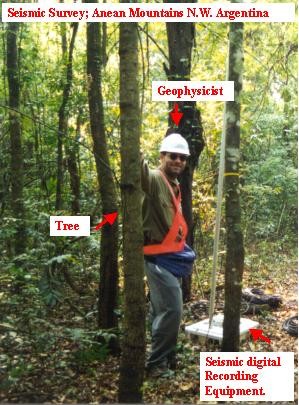- - The last three years have seen major changes in the system:
- 2003: All of the electroncs were replaced, with analogue filters
and amplifiers replaced by digital equipment
- 2004: I moved house, and aquired a very good listening room, full
masonary (cement walls, floor, and ceiling!). As a bonus, the dimensions
provide good modal support down to 30Hz, with no overlapping modes.
- 2005: The midrange and tweeter cabinets and drivers were augmented,
with a full rebuild of the speaker cabinets, taking advangate pro-audio
quality drivers from JBL, and innovative ideas in loudspeaker system design
and cabinet construction.
- 2005: Added Oblate Spheroid Waveguide horns to the Tad 2002
and JBL 2441 compression drivers
- -Starting at the input working towards the output :
- 2003:
- -Obtained a new CD unit from D.Benjamin,
a Dennon DCD-1520, which I used as a transport.
- -Revived the dead Valhalla board in my Linn LP12,
(with Asak & Ittok), I now have vinyl running again
after 5 years going without. The Linn motor has a
60hz spindle on it, so I could not use it straight
from the mains, had to fix my Valhalla to get
it running again. I am temporarily using an old
meridian 101 as the pre-preamp and RIAA gain
stage.
- -Installed a Behringer Ultradrive DCX2496 to act
as DAC, Preamp, Active digital Xover, and response tailoring
all in one! A very useful, and good sounding unit indeed!
- -The DCX has three inputs, I am using one as an SPDIF
(digital) input direct from the digital out of the CD player.
I am using the other two as 24bit 96khz A/D converters
for the turntable input. Switching between inputs is
from the front panel of the DCX and very convenient.
Digital input straight from the CD to the DCX avoids
an unnecessary D/A - A/D step between the CD and xover.
- -the flexibility, quality, and price performance of the
DCX is remarkably good.
- -Volume control is accomplished with a ganged potentiometer
(12 wafers), allowing me to run the DCX with digital in, at full
dynamic range for the Sharc DSP and output DAC's, then I
run each of the six DCX balanced outputs into a balanced
stereo pot, which acts as a phase splitter, allowing me to
run the subsequent power amplifiers in bridged mode
(balanced line feed all the way to the speaker load)
- -Placing the volume control on the output of the DCX
achieves the best of both worlds: maximizing the dynamic
range of the signal in the digital domain, and putting the
volume control just ahead of the analogue input to the
power amps, which yields the best S/N performance.
When a volume control was used on the input to the DCX
(which was only viable with analogue inputs), it
yielded noticeably poorer sound quality at low volume levels.
(less bits being used inside the DCX)
- -I also managed to get my giant TA104 Tripath amplifier
rig running (flawlessly hum free now), as well installing a
smaller TA2021B Tripath to drive the tweeters.
- -The amp-speaker configuration is as follows:
- -Bass: Two stereo TA104 boards, bridged, driving a pair of
18" Altecs, peak output aprox 1250 watts per channel,
Bandlimited 10hz to 110hz. (6db/oct)
- -Mid: Two stereo TA104 boards, bridged, driving four
10" JBL, peak output aprox 1250 watts per channel
Bandlimited 110hz to 1.1khz. (6db and 24db/oct)
- -Treble: One TA2021B, (internally bridged), driving
a pair of TAD 2002 compression drivers on custom horns,
sensitivity over 110db/watt, peak output aprox 15 watts per
channel, Bandlimited above 1.1khz (24db/octave)
- -The above amplifier rack could produce as much as 5 KW
output power, however for the purpose of dynamic range,
I am more interested in peak voltage swing, rather than
high power output.
- 2004: venue change to new house with 8' x 14' x 18.5' listening room
- 2005
- - full rebuild of speaker cabinets, adding pair 2"exit JBL-2441 compression drivers
as lower midranges, and four 14" JBL-1401ND direct radiators as upper bass drivers.
System is now five way, as follows
- - Lower Bass: pair 18" Altec 3182 drivers in 4m transmission line cabinet.
- - Upper Bass: four 14" JBL-1401ND drivers in 23L sealed cabinets.
- - Midrange: four 10" JBL 2123 drivers in 7L sealed cabinets.
- - Lower Treble: pair 2" exit JBL 2441 Alnico compression drivers
- - Upper Treble: pair 1" exit TAD-2002 Alnico compression drivers
- - added second Behringer DCX-2496 for five way system capability
- - rewired volume control using better potentiometers, and adding
extra wafers for five way system capability
- 2005
- - Purchaced a lathe, and turned four Oblate Spheroid waveguide horns (using Earl Geddes formula).
- - Waveguides are true constant directivity (CD) types,
with coverage angles of +/- 40 degrees over the full bandwidth of each device
- - The four horns were hand turned by me on a lathe from a solid block of French Oak
- 20010
- - Purchaced a JBL VT4880A Vertec speaker
- - Removed 2269h drivers, and installed into the 4m transmissionline cabinets
- - Installed the Altec 3182 drivers in the Vertec cabinets
- - configured the loudspeaker system to use six-way active digital crossover
- - configured the crossover to be 100% first order (6dB/octave) for minimum phase and optimum impulse response
|



















